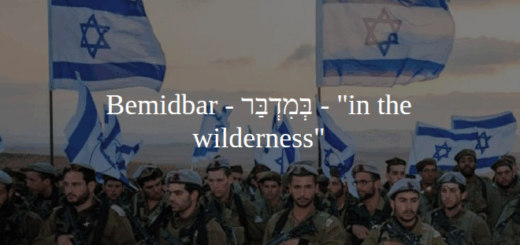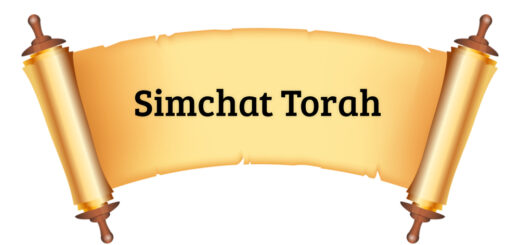Matot ‘Tribes’ and Masei ‘Journeys’ Torah Portion

This short article has been created with the help of AI instruments and reviewed by translator
With God’s help this week 20 Tamuz – 1 Ava 5785 (20 – 26 July 2025) people of Israel read Matot (מַטּוֹת) which is the 42nd weekly Torah portion, covering Numbers 30:2–32:42. Its name—Hebrew for “tribes”—derives from the opening word, as Moses addresses the tribal leaders. Also this week another Portion Masei (מַסְעֵי) which is the 43rd weekly Torah portion that encompasses Numbers 33:1–36:13 is read. Its name—Hebrew for “journeys”—derives from the opening word, as Moses recounts Israel’s stages of travel.
Matot
1. Structure & Content
- Laws of Vows (Nedarim) – Numbers 30:2–17
- Definition: A neder is a vow that a person voluntarily makes, binding them to perform (or abstain from) an action.
- A husband’s and father’s power to annul a wife’s or daughter’s vow (if objected on the day it’s made).
- Timeline for annulment: a husband can veto a wife’s vow until sunset; a father can veto an unmarried daughter’s vow until she marries.
- Once the vow is ratified (no objection by sunset), it becomes irrevocable.
- War against Midian – Numbers 31:1–12
- Command to wage holy war on Midian in retaliation for the incident at Peor (Balaam’s counsel and the Israelites’ idolatry).
- 12,000 men (1,000 per tribe) enlist under Phinehas’s leadership.
- Midianite kings killed; Balaam also slain.
- Spoils, Purification & Tribute – Numbers 31:13–54
- Division of captives, livestock and goods: soldiers keep half; the other half goes to the community.
- Ritual purification: survivors, captives and booty undergo a seven-day purification process.
- A mandatory tithe (one-fifth) of spoil given to Eleazar the priest.
- Land Allotment Requests – Numbers 32:1–42
- Tribes of Reuben and Gad (with half-tribe of Manasseh) request Transjordan pastures for their large herds.
- Moses initially fears shirking of duty; they pledge to join conquest of Canaan first.
- Promise upheld: once Canaan is subdued, they’ll return to settle there.
- Later agreement: they build an altar by the Jordan “as a witness,” not for idol worship, but to affirm Israel’s unity.
2. Key Themes & Lessons
- Power of Speech & Responsibility
Vows illustrate that words can create binding obligations. One must consider carefully before making promises.
- Balance of Authority
The Torah recognizes familial authority but restricts it by timelines and conditions, teaching both respect and personal accountability.
- Justice & Retribution
- Unity vs. Particularism
The campaign against Midian underscores communal accountability: those who lead others into sin bear consequences. The request of Reuben, Gad and half-Manasseh highlights the tension between individual/familial needs and the national mission. Their responsible compromise preserves both.
3. Haftarah
- Jeremiah 1:1–2:3
Jeremiah’s call parallels Moshe’s commissioning of leaders; both emphasize divine appointment and the weight of prophetic/leadership speech.
4. Customs & Insights
- Many communities study the Laws of Vows in depth, applying them to modern contexts (e.g., charitable pledges).
- The Midian campaign is seen as a warning against spiritual complacency and the dangers of external temptations.
- The Transjordan tribes’ compromise serves as a model for negotiation: firm on principle, flexible on logistics.
Summary of Key Points
- Matot begins with vow-law, teaching speech’s sanctity and limits of authority.
- It recounts the war on Midian, justice and ritual purification of spoils.
- Concludes with the Tribal land allotment, balancing personal needs with collective mission.
- Central lessons: responsibility for one’s words, communal justice, and unity.
Masei
1. Structure & Content
- Recounting the Journeys – Numbers 33:1–49
- A detailed list of 42 encampments, from Egypt’s departure to the Plains of Moab.
- Emphasizes divine guidance: each move directed by God’s cloud.
- Borders of the Promised Land – Numbers 34:1–15
- North, south, east, and west border descriptions.
- Appointment of leaders from each tribe to oversee the land’s division.
- Land Allotment & Levite Cities – Numbers 34:16–35:8
- Instructions for assigning inheritance parcels.
- Levites receive 48 cities (6 for the priests, 42 for the Levites) scattered among tribal territories.
- Cities of Refuge – Numbers 35:9–34
- Six cities designated for those who commit involuntary manslaughter.
- Legal process: killer flees to a refuge, stands trial, and remains until the High Priest’s death.
- Protection against the “blood avenger” (־go’el haddam־) who might seek revenge.
- Daughters of Zelophehad & Tribal Integrity – Numbers 36:1–13
- Moses enforces a ruling: daughters who inherit must marry within their father’s tribe.
- Ensures tribal land portions remain intact.
2. Key Themes & Lessons
- Memory & Continuity
- Boundaries & Belonging
- Sanctity of Life & Justice
- Inclusivity within Structure
Recounting each camp teaches the value of remembering formative stages and recognizing God’s constant care. Precise borders and tribal allotments reflect both divine order and communal identity. Cities of refuge balance compassion (for the unintentional slayer) with protection of kin and upholding justice. Zelophehad’s daughters model legitimate claims—even by those on society’s margins—while preserving tribal cohesion.
3. Haftarah
- Jeremiah 2:4–28; 3:4
Echoes the “journey” motif: Israel’s wandering from God’s guidance into spiritual exile, calling for return and remembrance.
4. Customs & Insights
- Many study the enshrinement of memory—how we map our personal “journeys” and milestones.
- Cities of Refuge inspire modern discussions on restorative justice and asylum.
- The Zelophehad incident underpins contemporary debates on inheritance rights and gender equity.
5. Summary
- Masei opens with a litany of encampments, teaching gratitude for divine leadership.
- It defines the geography of Israel and sets up the tribal land-distribution system.
- The cities of refuge establish humane legal safeguards.
- Finally, the ruling on Zelophehad’s daughters balances inclusivity with communal integrity.
Together, these sections weave themes of memory, justice, and unity as Israel stands poised to enter its homeland.








